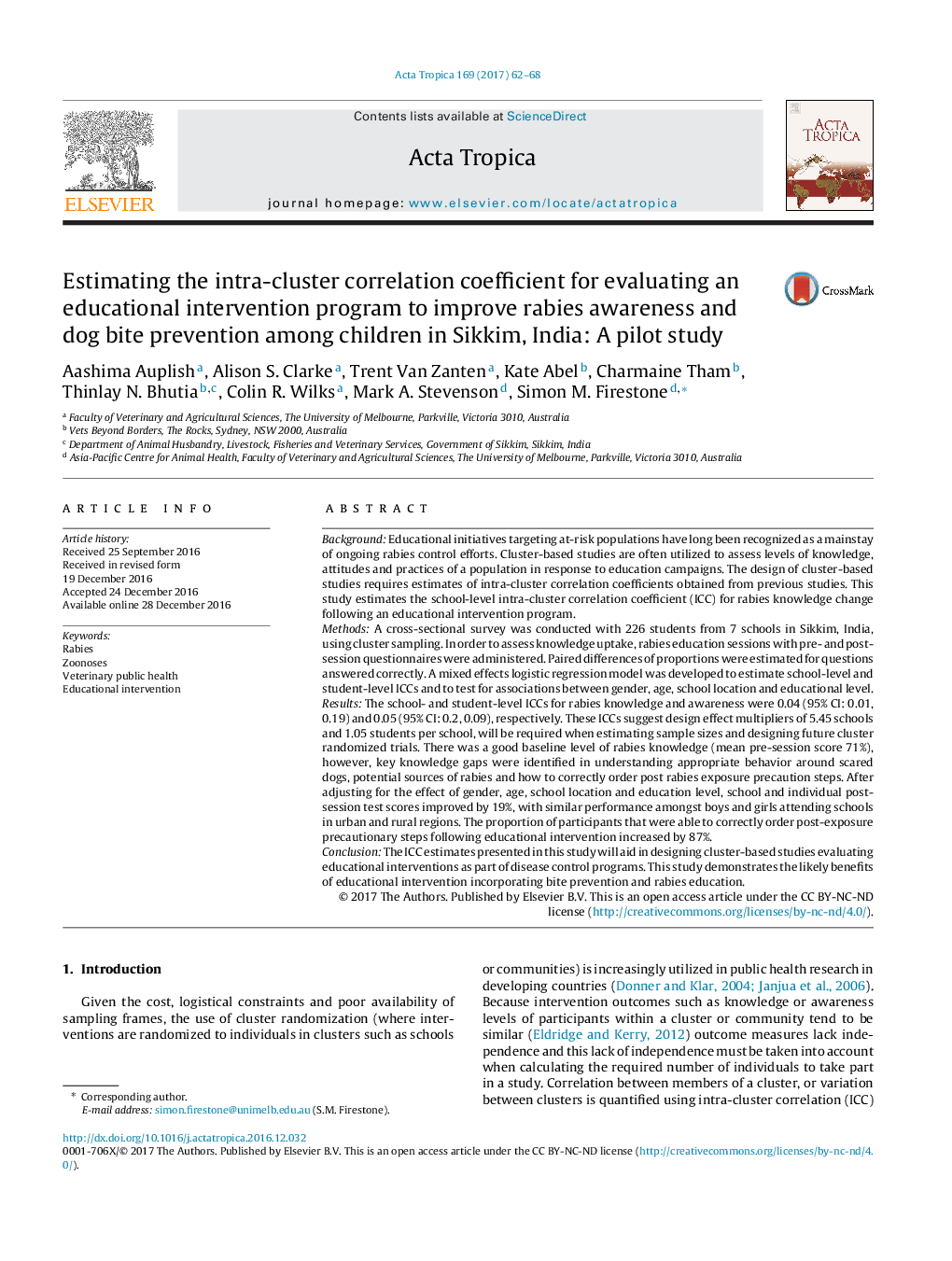| کد مقاله | کد نشریه | سال انتشار | مقاله انگلیسی | نسخه تمام متن |
|---|---|---|---|---|
| 5670858 | 1592755 | 2017 | 7 صفحه PDF | دانلود رایگان |
BackgroundEducational initiatives targeting at-risk populations have long been recognized as a mainstay of ongoing rabies control efforts. Cluster-based studies are often utilized to assess levels of knowledge, attitudes and practices of a population in response to education campaigns. The design of cluster-based studies requires estimates of intra-cluster correlation coefficients obtained from previous studies. This study estimates the school-level intra-cluster correlation coefficient (ICC) for rabies knowledge change following an educational intervention program.MethodsA cross-sectional survey was conducted with 226 students from 7 schools in Sikkim, India, using cluster sampling. In order to assess knowledge uptake, rabies education sessions with pre- and post-session questionnaires were administered. Paired differences of proportions were estimated for questions answered correctly. A mixed effects logistic regression model was developed to estimate school-level and student-level ICCs and to test for associations between gender, age, school location and educational level.ResultsThe school- and student-level ICCs for rabies knowledge and awareness were 0.04 (95% CI: 0.01, 0.19) and 0.05 (95% CI: 0.2, 0.09), respectively. These ICCs suggest design effect multipliers of 5.45 schools and 1.05 students per school, will be required when estimating sample sizes and designing future cluster randomized trials. There was a good baseline level of rabies knowledge (mean pre-session score 71%), however, key knowledge gaps were identified in understanding appropriate behavior around scared dogs, potential sources of rabies and how to correctly order post rabies exposure precaution steps. After adjusting for the effect of gender, age, school location and education level, school and individual post-session test scores improved by 19%, with similar performance amongst boys and girls attending schools in urban and rural regions. The proportion of participants that were able to correctly order post-exposure precautionary steps following educational intervention increased by 87%.ConclusionThe ICC estimates presented in this study will aid in designing cluster-based studies evaluating educational interventions as part of disease control programs. This study demonstrates the likely benefits of educational intervention incorporating bite prevention and rabies education.
Journal: Acta Tropica - Volume 169, May 2017, Pages 62-68
